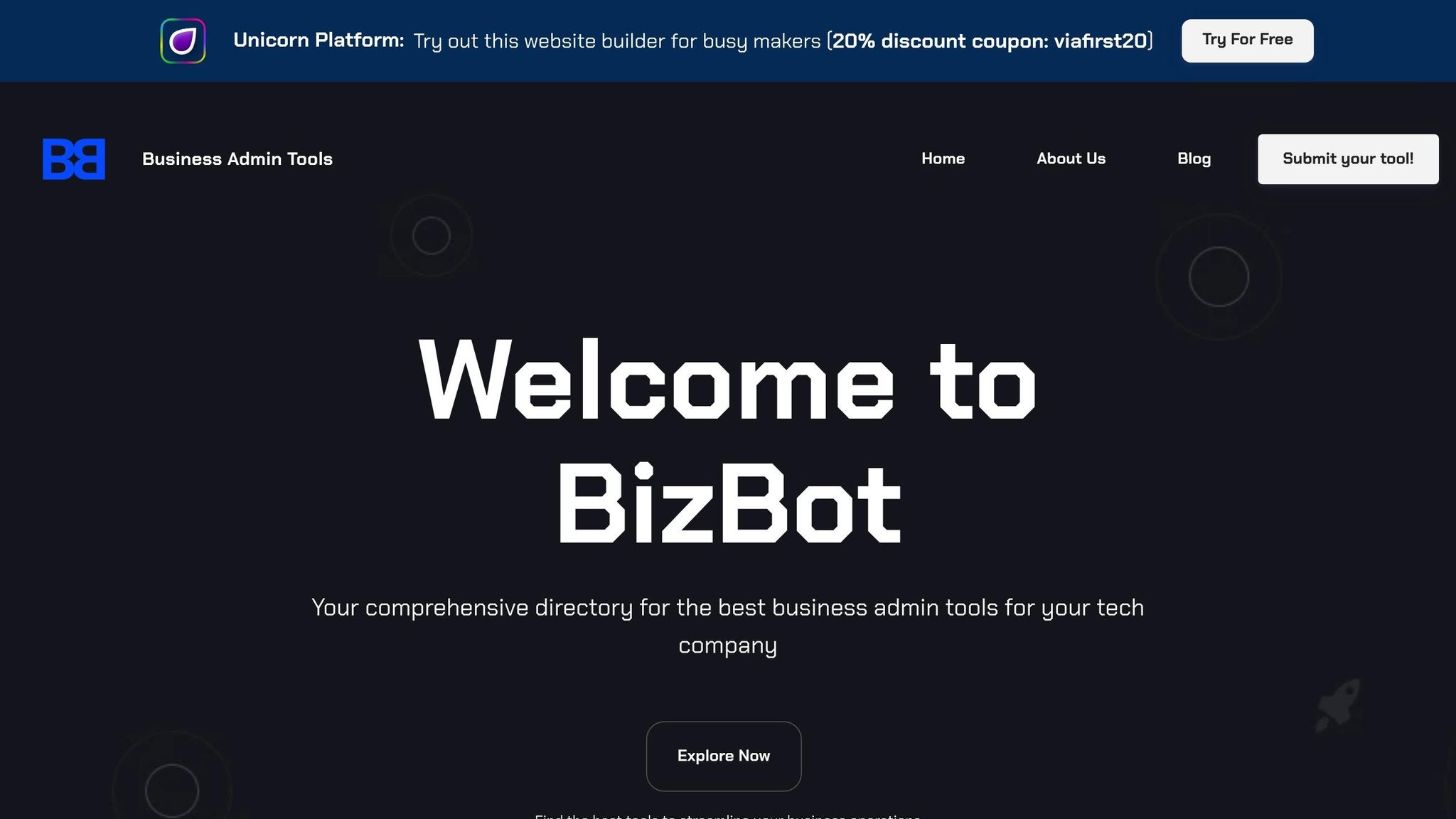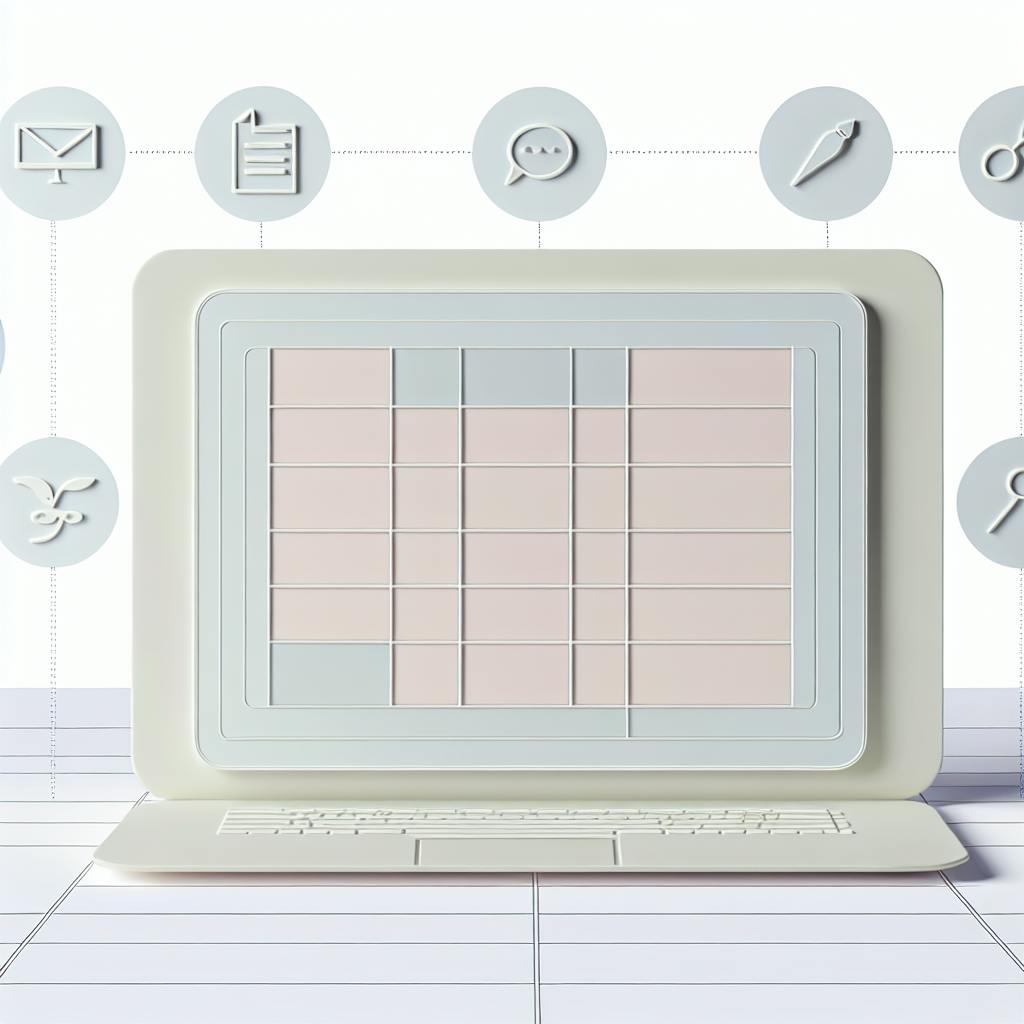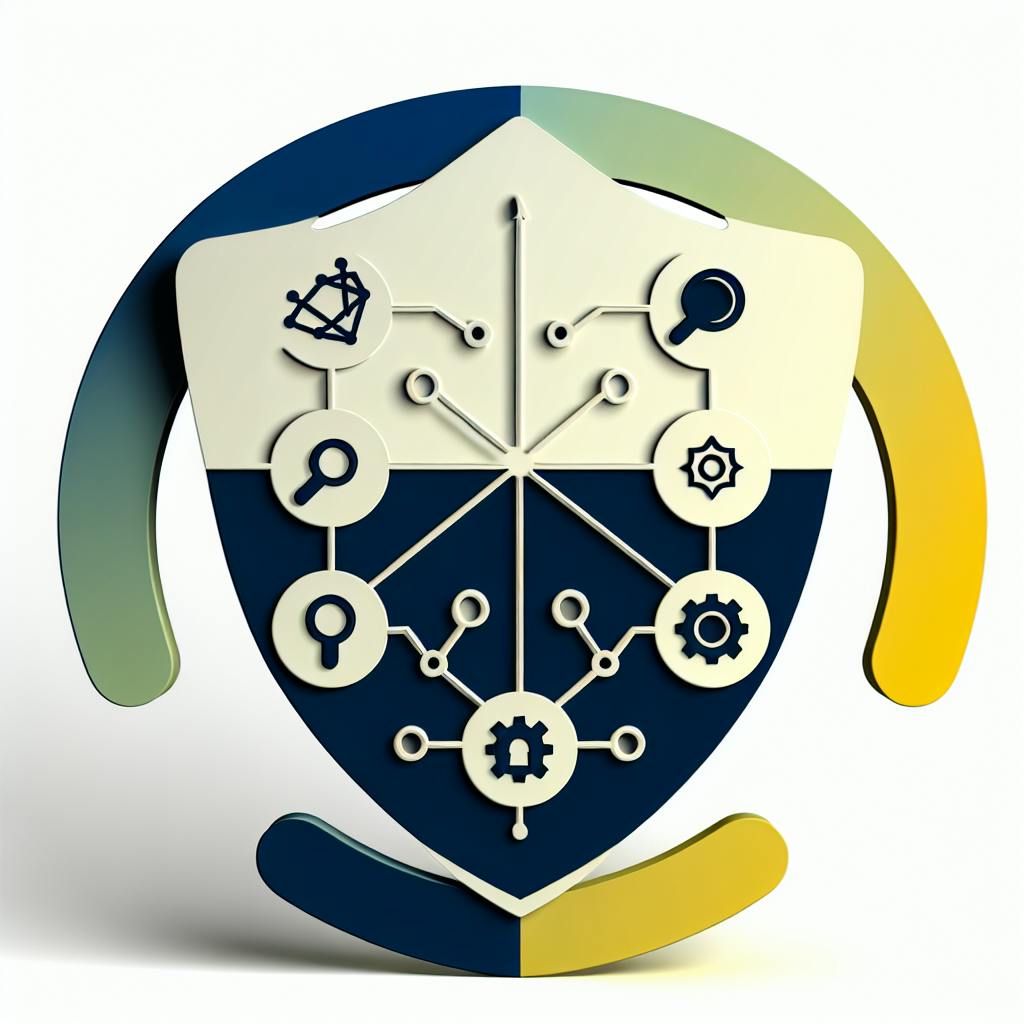ERG management software simplifies running Employee Resource Groups (ERGs) by centralizing tasks like membership tracking, event planning, communication, and reporting. These tools help organizations improve employee engagement, streamline operations, and align ERGs with broader Diversity, Equity, and Inclusion (DEI) goals.
Key takeaways:
- What it does: Consolidates ERG operations into one platform, reducing administrative burdens.
- Why it matters: 90% of Fortune 500 companies use ERGs to boost engagement and retention.
- Core features: Membership management, communication tools, event planning, and analytics.
- Benefits: Tracks metrics like participation and retention, simplifies communication, and supports DEI initiatives.
- Implementation steps: Assess needs, customize the platform, and train ERG leaders for success.
This software is especially useful for organizations managing multiple ERGs or looking to enhance their DEI efforts with measurable results.
Employee Resource Group (ERG) Software: What is it and how it improves employee engagement
Core Features and Capabilities of ERG Management Software
ERG management software simplifies operations and enhances participation by addressing common challenges in managing Employee Resource Groups (ERGs). Through a combination of administrative tools, engagement features, and analytics, the software unifies processes to help ERGs thrive.
Centralized ERG Administration
Managing multiple ERGs becomes far more efficient when everything is housed on one platform. This centralized approach reduces administrative workload and ensures consistency across all groups. Administrators can set up and manage multiple ERGs, each structured to align with its specific mission and goals.
Role-based permissions allow different levels of access, ensuring that users can only view or modify what’s relevant to them. Budget tracking and resource allocation tools promote financial transparency, helping leaders manage funds effectively. While individual ERG leaders focus on their specific groups, HR administrators maintain an overarching view, creating a seamless balance between autonomy and oversight.
The platform’s flexibility accommodates a variety of ERG types - whether supporting women in leadership, LGBTQ+ employees, or veterans transitioning to civilian careers. Customizable group structures ensure that each ERG can operate in a way that best serves its members.
Tracy Lopez, Regional Vice President at LexisNexis, emphasizes this adaptability: "The beauty of the platform is that it is highly customizable for an ERG to launch a program of any size".
Membership Engagement and Communication Tools
Joining an ERG is as simple as a single click, removing common barriers to participation. Employees can quickly find and join groups that resonate with them, an especially important feature given that 90% of Fortune 500 companies rely on ERGs to boost employee engagement.
Strong communication tools are essential for successful ERG programs. Integrated group chats, messaging systems, and discussion boards keep conversations flowing, while announcement features ensure important updates reach everyone promptly. By integrating into familiar workplace environments, the platform encourages consistent participation and higher adoption rates.
Additional features like document storage and photo sharing help ERGs build a repository of institutional knowledge and celebrate milestones. Peer-to-peer connections are strengthened through message boards, and polling tools allow leaders to gather feedback and make informed decisions about their programs .
Analytics and Reporting Tools
Real-time dashboards provide leaders with instant insights into their ERG’s performance. Metrics like membership growth, event attendance, and activity participation are tracked, helping leaders understand what’s working and where improvements are needed.
The software also connects ERG involvement to broader organizational goals. Companies can analyze how participation impacts employee retention, promotions, and job satisfaction - data that’s vital for securing continued support from leadership.
Customizable reporting tools offer flexibility, whether tracking diversity metrics, measuring professional development outcomes, or calculating return on investment. These reports cater to various stakeholders and ensure that decisions are backed by solid data.
Shone Zachariah, an ERG program manager, highlights the convenience of centralized data: "As a program manager for ERG, the data is in one place. I don't have to ask ERG leaders to do a lot of extra work. We can make decisions faster right by bringing everything together. We can answer questions easier. ERG leaders don't have to spend so much time doing the administrative work".
With these tools, organizations can identify participation trends, determine which initiatives drive the most engagement, and adjust strategies based on real evidence rather than guesswork.
Steps to Implement ERG Management Software
Setting up ERG management software isn’t just about installing a tool - it’s about aligning the platform with your organization’s goals and ensuring it’s effectively used. This involves understanding your company’s unique needs, customizing the software to fit your structure, and equipping ERG leaders with the right training.
Assessing Organizational Needs
Start by evaluating your current ERG program to identify specific requirements. This step helps determine if ERG management software is right for your organization and which features are most relevant.
Understand the maturity of your ERG program. For example, companies on Fair360's DiversityInc Top 50 list typically manage around 10 ERGs on average. If your company has fewer than 500 employees or is just starting its ERG program, software might not yet be necessary.
Bring together key stakeholders - ERG leaders, HR representatives, and IT staff - to ensure the software aligns with your operational needs and integrates seamlessly with existing systems.
Set measurable goals and connect them to broader business objectives. Establish key performance indicators (KPIs) to track the software’s impact. Metrics like membership growth, event participation, and employee satisfaction related to ERGs can highlight how these groups contribute to your company’s mission.
Survey employees to gauge interest in ERGs and identify their needs. With 41.3% of employees reporting that their workplace has ERGs, there’s a significant opportunity to boost engagement when programs are thoughtfully designed.
These insights guide the platform’s customization to meet your organization’s specific requirements.
Customizing and Configuring the Platform
Customization is key to ensuring the software fits seamlessly into your organization’s structure. The best ERG management platforms allow for extensive adjustments, avoiding a one-size-fits-all approach.
Tailor the platform to reflect your company’s branding and structure. This includes adding your logo, aligning the color scheme with brand guidelines, and organizing ERGs to mirror your internal hierarchy. A personalized platform can foster a stronger connection among employees and drive adoption.
The software should adapt to your existing ERG workflows, not the other way around. One Teleskope client shared their experience:
"Teleskope said, 'We have the bones, we have the structure, let us deliver what you need on the Teleskope Platform.' So, we didn't end up having to change our programming a lot because they built their technology to support what we already had in place, unlike Benevity or one of the other programs."
Set governance and compliance controls. Configure user permissions, content moderation, and data access settings to match your company’s security and privacy requirements.
Clearly define ERG goals before finalizing the setup. Whether the focus is professional development, community outreach, or business impact, the platform’s features should align with these objectives.
Training and Onboarding for ERG Leaders
Once the platform is configured, it’s time to focus on empowering ERG leaders. Training ensures they can fully leverage the platform while also building leadership skills to engage members effectively.
Develop leadership programs specifically for ERG leaders. These programs should include areas like conflict resolution, strategic planning, and advocacy. ERG leaders often face challenges that go beyond just using the software, making this training essential.
Workshops on practical skills - such as team building, event planning, and public speaking - can further support ERG success.
Encourage collaboration and peer learning. Create opportunities for ERG leaders to share experiences and mentor each other. This can be supplemented with executive coaching or mentorship programs for more personalized guidance.
Incorporate real-world success stories. For example, in 2024, Dow enhanced its onboarding process by partnering its RISE ERG with HR. The system sent personalized messages at key intervals - day seven, day 14, and day 30 - to encourage new employees to join ERGs.
"Once employees join RISE, a note is triggered to the RISE leader at their location, who will then reach out to engage them, provide resources, update them on upcoming events, and enhance their sense of belonging." - Shruti Bahadur, Global Leader of Employee Experience and Employee Resource Groups at Dow
Provide essential resources upfront. Share codes of conduct, employee handbooks, and clear policies to set expectations. Training on topics like unconscious bias and inclusive leadership can help ERG leaders create welcoming environments.
Finally, emphasize the importance of continuous learning. Encourage participation in workshops, webinars, and conferences focused on leadership and inclusion. Feedback mechanisms can also help leaders refine their strategies based on input from peers and members.
Optimizing ERG Programs with Software
Once the foundational elements of your ERG program are in place, the next step is fine-tuning it for maximum impact. Using software to harness analytics, encourage collaboration, and centralize resources can help your ERG program evolve and keep members engaged. By leveraging these tools, you can ensure your program stays dynamic and aligned with organizational goals.
Using Analytics for Continuous Improvement
Analytics are the backbone of any successful ERG program. With the right software, raw data can be transformed into actionable insights that guide decision-making.
Track metrics like membership growth, event participation, and retention rates. Combine this data with HRIS (Human Resources Information System) insights to understand how ERGs influence broader goals, such as employee satisfaction and retention. Automated data collection ensures you're working with accurate, reliable information.
For instance, connecting ERG data with HRIS can highlight trends in employee promotions or satisfaction levels tied to ERG involvement. Customizable dashboards and reports make it easier for managers to act on these insights and refine their strategies.
Take Zscaler as an example. By using Guider ERG Management Software, they expanded programs like Women in Zscaler Engage (WiZE), Black Employees at Zscaler (B@Z), and Asian American Pacific Islander Employees at Zscaler (AAPI@Z). The results? An impressive 86% positive participant feedback rate, global engagement across 14 countries, and improved leadership skills.
Analytics tools also provide a deeper understanding of membership demographics, performance trends, and engagement patterns over time. They can help identify underrepresented groups, peak participation periods, and successful program elements worth replicating. These insights also pave the way for stronger collaboration between ERGs.
Improving Collaboration Across ERGs
Collaboration between ERGs can amplify their impact. Software platforms create centralized spaces where ERGs can connect, share ideas, and work together seamlessly.
Set up formal collaboration channels, such as inter-ERG committees, shared communication platforms, and regular meetings, to encourage information exchange and joint initiatives. By working together, ERGs can tackle common challenges - like leadership development or inclusive hiring - and pool their strengths.
Joint events, such as workshops, training sessions, or social gatherings, can also foster connections across groups and promote understanding among employees. Research shows that effective ERG collaboration can attract a broader audience, enhance organizational support, and drive meaningful change.
ERG software makes it easier to share resources and best practices, reducing redundancy and freeing up leaders to focus on creating new initiatives. This streamlining of efforts ensures that ERGs can work smarter, not harder.
Promoting Engagement Through Resource Hubs
A well-organized resource hub can be a game changer for member engagement. Centralized access to tools, materials, and communication channels keeps members informed and motivated to participate.
Build a resource library that includes essential materials like mission statements, meeting notes, professional development guides, and relevant articles. Members should be able to access these resources whenever they need them.
Use built-in communication tools to streamline outreach. Templates for newsletters or announcements can help keep members in the loop and ensure the ERG remains visible within the organization.
Mobile-friendly platforms are especially important for employees in remote or hybrid roles. Software that works seamlessly on smartphones and tablets ensures everyone can stay involved, no matter where they are.
Interactive features like group chats, messaging systems, and discussion boards can foster a sense of community within ERGs. These tools keep conversations going and help members feel connected.
Finally, user-friendly event planning tools within resource hubs make it easy to promote events, manage registrations, and track attendance. Regularly updating the hub with fresh content ensures it stays relevant and engaging over time.
sbb-itb-d1a6c90
Conclusion: Getting the Most from ERG Management Software
Key Points Recap
ERG management software is transforming how companies approach Diversity, Equity, and Inclusion (DEI) initiatives. By simplifying administrative tasks, centralizing communication, automating routine processes, and delivering actionable data insights, this software enhances program performance and strengthens employee engagement. It’s no surprise that all companies on Fair360's DiversityInc Top 50 list have ERGs, with these organizations managing an average of 10 ERGs, regardless of their size. The need for such tools becomes even more pressing when considering that only 6% of ERG leaders are compensated for their efforts, underscoring the importance of efficiency for these volunteer-driven programs.
Successful implementation of ERG software requires thoughtful planning. From evaluating organizational needs to tailoring the platform and training leaders, every step matters. However, the real payoff comes during the optimization phase. Advanced analytics enable continuous refinement, while collaboration tools and resource hubs keep members engaged - an essential factor in today’s hybrid work setups.
The benefits of well-managed ERGs are clear. Organizations with active ERGs report higher employee engagement, better retention rates, and enhanced employer branding. In fact, 90% of businesses with ERGs view them as critical to advancing DEI efforts, and 66% of employees say ERGs foster a strong sense of community. To fully realize these advantages, choosing the right software is crucial.
How BizBot Can Help

Selecting the right ERG management software can feel overwhelming, especially when comparing features, pricing, and integration options. That’s where BizBot comes in. BizBot offers a comprehensive directory of business administration tools, including solutions tailored for HR and ERG management. Whether you’re a freelancer or part of a growing enterprise, BizBot’s organized categories make it easier to find tools that fit your specific needs. By bringing together essential business resources in one place, BizBot helps organizations create efficient, impactful ERG programs that drive real change and support their DEI goals.
FAQs
How does ERG management software support an organization's DEI goals?
The Role of ERG Management Software in DEI Initiatives
ERG management software is a powerful tool for organizations aiming to achieve their Diversity, Equity, and Inclusion (DEI) goals. These platforms simplify the coordination and support of Employee Resource Groups (ERGs), making it easier to create a workplace where everyone feels included and valued. They provide essential tools to organize ERG activities, monitor participation, and assess their influence on DEI efforts.
Here are some key features these platforms offer:
- Tools for employee engagement: Encourage collaboration and boost participation within ERGs.
- Performance monitoring: Track how ERGs contribute to achieving DEI objectives.
- Integration with company strategies: Align ERG initiatives with the organization's larger goals.
By using ERG management software, companies can build a more inclusive workplace, promote fairness, and ensure their DEI initiatives are on track.
What are the key steps to successfully implement ERG management software in an organization?
To get the most out of ERG management software, start by setting specific goals and identifying key performance indicators (KPIs) that tie directly to your organization’s priorities. Take the time to assess your current ERG landscape - what’s working, what’s not, and where the software can fill the gaps.
Gaining leadership support is crucial. Engage leaders early and involve employees in the planning process to ensure everyone feels invested. When selecting software, focus on tools that offer tracking features, communication hubs, and reporting options. These functionalities can simplify coordination and keep your ERG efforts on track.
Establish clear procedures for managing ERG initiatives and regularly check in on progress. Be ready to tweak your approach based on feedback and results to keep participation high and outcomes meaningful. With these steps, your organization can build a solid framework for managing ERGs effectively and driving impactful change.
How do analytics and reporting tools in ERG management software help improve the effectiveness of Employee Resource Groups?
The Role of Analytics and Reporting Tools in ERG Management Software
Analytics and reporting tools are game-changers when it comes to managing Employee Resource Groups (ERGs). These tools provide a clear window into critical metrics such as participation rates, engagement levels, and retention trends. With this data, organizations can pinpoint what’s working well and where there’s room to improve their ERG efforts.
The ability to track data in real time gives ERG leaders the power to continuously assess the impact of their programs. Armed with this information, they can make smarter, data-backed decisions to fine-tune activities and ensure everything aligns with the company’s broader goals. By leveraging actionable insights, businesses can shape ERG programs that are not only more inclusive but also deliver meaningful and measurable results.


